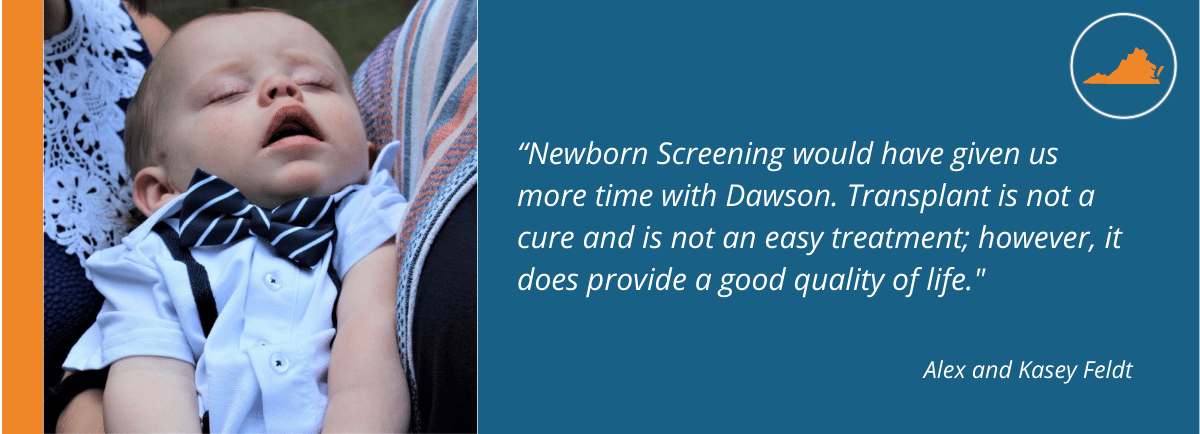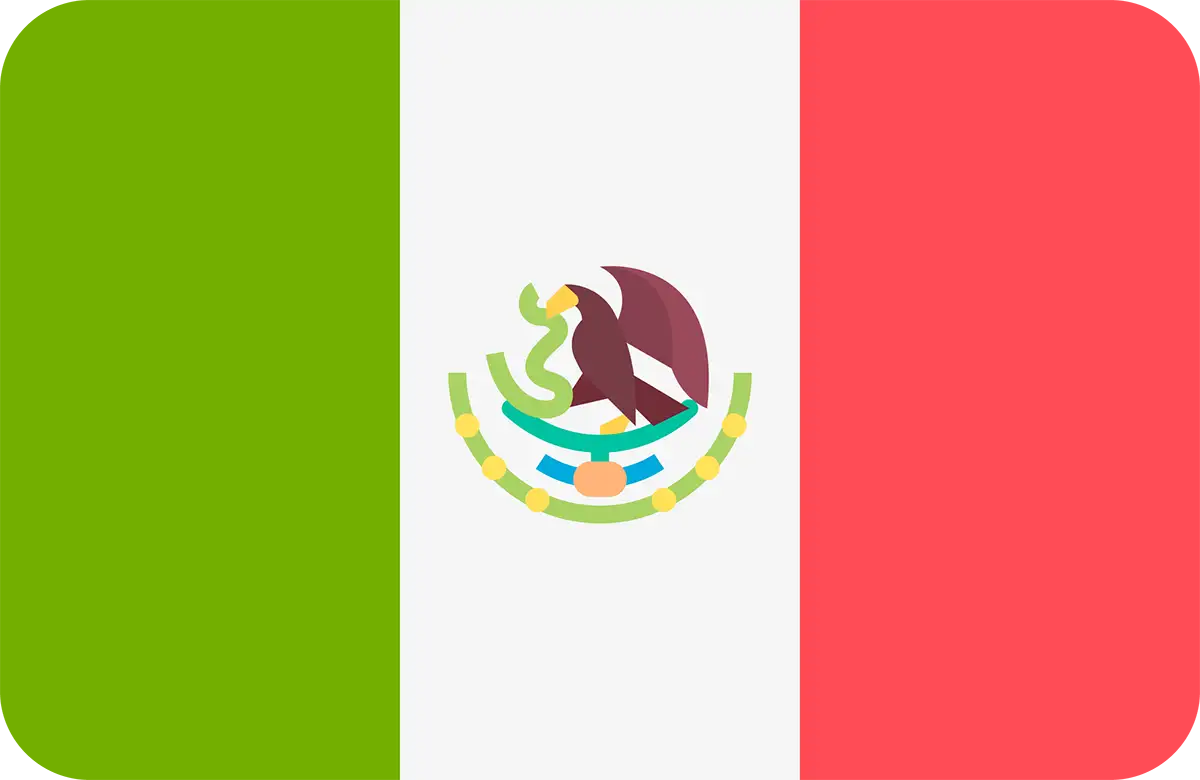DOWNLOAD STATE FACT SHEET AS PDF

In 2020, there were 94,749 live births in Virginia 2 There are 35 conditions on the Virginia Newborn Screening Panel 3
All babies in the United States are screened for several conditions shortly after birth. Approximately 24-48 hours after a baby is born in the United States, the heel is pricked by a nurse to collect a small sample of blood. Afterward, the nurse puts a series of blood drops onto a filter paper to create several “dried blood spots.” Next, the newborn screening card is sent to the state laboratory for analysis. Several families worked to inform the Virginia NBS Advisory Committee about the need to test for Krabbe disease. The Feldts were part of the advocacy efforts to implement House Bill (HB) 97, Nikola’s Law. In December 2020, HB 97 was not signed and the Virginia NBS Advisory Committee voted against adding it to their state’s panel.
What is Krabbe Disease?
Krabbe disease (pronounced krab A), is a rare genetic disorder, also known as globoid cell leukodystrophy. In the United States, Krabbe disease has been reported to affect approximately 1 in 100,000 individuals.1 Infantile Krabbe disease is the most common and severe form causing infants to lose the ability to eat, extreme irritability, inability to sit up, grasp objects, blindness, and seizures. Sadly, infants die within the first 2-3 years of life in states that do not test for Krabbe disease. We invite you to learn more at Understanding Krabbe Disease.
Why Screen for Krabbe Disease?
Krabbe disease is a severe neurodegenerative and rapidly progressing condition requiring immediate treatment for the most severe forms. Emmalynn was diagnosed with an early onset form of Krabbe disease which requires an early diagnosis to ensure treatment occurs within the first 30-45 days of life. However, the medical issues and symptoms of any form of Krabbe disease are significant and life impacting. A delayed diagnosis, especially in the most severe forms, equates to palliative and supportive care as the only means of treatment until premature death. Download Virginia Fact Sheet
Krabbe Disease Hero: Dawson Feldt

See all our Krabbe Disease Heroes.
On July 16, 2019, Alex and Kasey Feldt welcomed a perfect baby boy, Dawson Luke Feldt. He was beautiful, strong, and everything they had dreamed of. They had three perfect months of smiles, babbles, and a couple of laughs until they noticed Dawson lacked head control, was consuming less formula, and seemed to have increased difficulty keeping his formula. Even though Alex and Kasey did not want to believe something was wrong with Dawson, they consulted with a neurologist. While conducting tests for months to find answers, he started having spasms which caused incredible nerve pain and was rapidly losing weight. After a weeklong hospital stay, Alex and Kasey learned Dawson had Krabbe disease. Over the phone, the neurologist described the unpleasant symptoms of the disease, and that the life expectancy would only be two years old. Sheer devastation consumed Alex and Kasey.
Alex and Kasey worked diligently to make Dawson as comfortable as possible. In a matter of months, they went to UPMC twice, first to meet Dr. Maria Luisa Escolar and second to have Dawson’s G-Tube and Nissen surgery. After that, their lives revolved around medicine and feeding schedules, medical equipment, learning about the disease, and spending quality time with Dawson.
They took multiple family pictures, spent time in the pool, took him to the zoo, and spent every weekend with family members and friends. They tried to keep him happy and comfortable, and they soaked up every snuggle they possibly could. He loved watching Baby Shark and Mickey Mouse Clubhouse.
Dawson lost his battle with Krabbe disease on November 8, 2020, with Alex and Kasey by his side.
Resources
- The Leukodystrophy Newborn Screening Action Network is dedicated to advancing newborn screening for leukodystrophies and lysosomal storage disorders, supporting newly-diagnosed families, and ensuring collaboration between all stakeholders. Learn more at https://ldnbs.org/.
- CDC offers funding and assistance through the Newborn Screening Quality Assurance Program (NSQAP). More information can be found at https://www.cdc.gov/labstandards/nsqap.html.
- Baby’s First Test provides funding opportunities through grants. Learn more at https://www.babysfirsttest.org/newborn-screening/funding-opportunities.
- American Public Health Laboratories NewSTEPS program provides data, technical assistance, and training. Details at https://www.newsteps.org/.
- KrabbeConnect offers patient support services to help families navigate the burden of Krabbe disease. Learn more at https://krabbeconnect.org/.
- Hunter’s Hope Foundation is a non-profit organization committed to giving hope through education, awareness, research, and family care for all leukodystrophies. Learn more at https://www.huntershope.org/.
Citations
- Wenger DA. Krabbe Disease. 2000 Jun 19 [Updated 2011 Mar 31]. In: Pagon RA, Adam MP, Ardinger HH, et al., editors. GeneReviews® [Internet]. Seattle (WA): University of Washington, Seattle; 1993-2017.
- “Fertility Rate: Ohio, 2010-2020.” March of Dimes | PeriStats, https://www.marchofdimes.org/peristats/data?reg=99&top=2&stop=1&lev=1&slev=4&obj=1&sreg=51. Accessed 6 Sep. 2022.
- “Minnesota | Baby’s First Test | Newborn Screening | Baby Health.” Babysfirsttest.org, 2015, https://www.babysfirsttest.org/newborn-screening/states/virginia. Accessed 6 Sept. 2022.
All information in this fact sheet is based on data available before 9.9.2022


